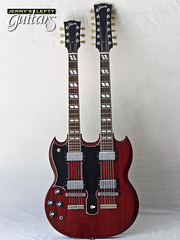
- Best Facelift Surgeon Nyc
Submitted by: Ricardo Silva
When dealing with the refurbishing of facial skin, peels are a popular option. Here is an overview of enzyme peels for your facial skin care needs.
An Overview of Enzyme Peels for Your Face
The enzyme peel is not a new technique at all. It has been performed for a long time ago but often without a deep knowledge on the matter. This is easily confirmed after an overview of those home remedies and cosmetics intended for skin care, such as papaya or green apple facemasks or lotions.
Papaya enzymes are not only good for nutrition but also to peel off epidermal cells, which aids in regenerating the skin. This property is also observed in aloe Vera, pumpkin, pineapple, and other fruits. Restorative enzyme peel is a type of exfoliating non-surgical procedure that uses natural or chemical products to produce exfoliation.
An Enzyme peel accelerates the natural exfoliate process of the skin to get rid of dead skin cells, promote young cell renewal, and visibly diminish scars, stretch marks, aging spots and lines, sun damage, and skin discoloration. Enzymes penetrate the upper layers of the tissue, cleansing pores and improving skin texture, tone, elasticity and tautness.
Although, some enzyme peels work with the aid of acids or mechanical granules, natural enzymes are the most recommended to prevent dryness or allergic reactions. In fact, some strong chemicals used for deep peeling, such as phenol, may cause cancer of the skin or side effects.
In order to obtain the most benefits from enzyme peels, whatever the product you choose or the natural home remedy, you can get the most from it by applying a thin layer to your clean and dry skin, rather than a thick coat. Enzymes work best by rubbing gently in a mild circular motion.
An Enzyme Peel produces results in the short term after begin the application, but you need to perform a routine exfoliation to see good results. Treatments with enzymes improve your skin look and feel, but do not stop aging. Furthermore, you will have to repeat a peeling treatment after a certain period of time to remove new damaged cells and keep your fresh and youthful appearance.
About the Author: Ricardo de Silva is with
PlasticSurgeonPractices.com
– a directory of plastic surgeons.
Source:
isnare.com
Permanent Link:
isnare.com/?aid=63283&ca=Womens+Interest}



